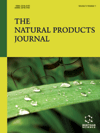
Full text loading...
We use cookies to track usage and preferences.I Understand

Natural substances are gaining interest as anticancer agents nowadays due to the adverse effects of synthetic drugs. Among various natural substances, lycopene has emerged as a strong antioxidant agent and has been found to be effective against prostate, breast, colon, ovarian, liver, endometrial cancers, etc. This article reviews the therapeutic potential and proposed mechanism of action of lycopene against breast and gynecological cancer from 2005 to now. Experimental studies suggest that lycopene can inhibit tumor growth by regulating various signaling pathways for cell growth, arresting the cell cycle, and inducing cell apoptosis. Lycopene is reported to combat breast cancer specifically via mechanisms, such as regulation of expression of p53 and Bax, suppression of cyclin D, inhibiting the activation of ERK and Akt signaling pathway, and gynecological cancer via various signaling pathways such as STAT3, Nrf2, and NF- 𝜅B, down-regulation of ITGB1, ITGA5, FAK, MMP9, and EMT markers, etc.

Article metrics loading...

Full text loading...
References


Data & Media loading...